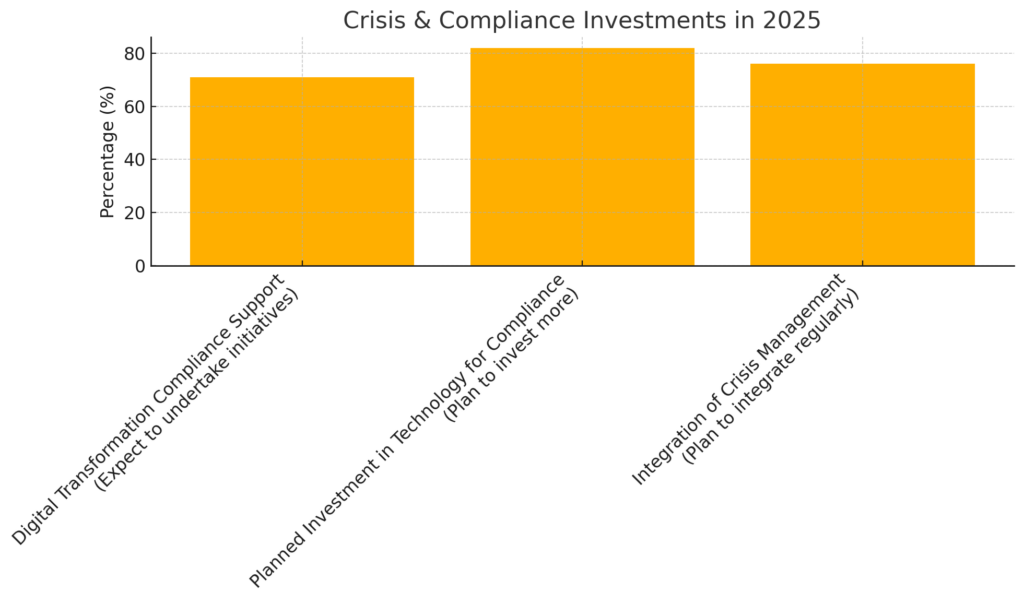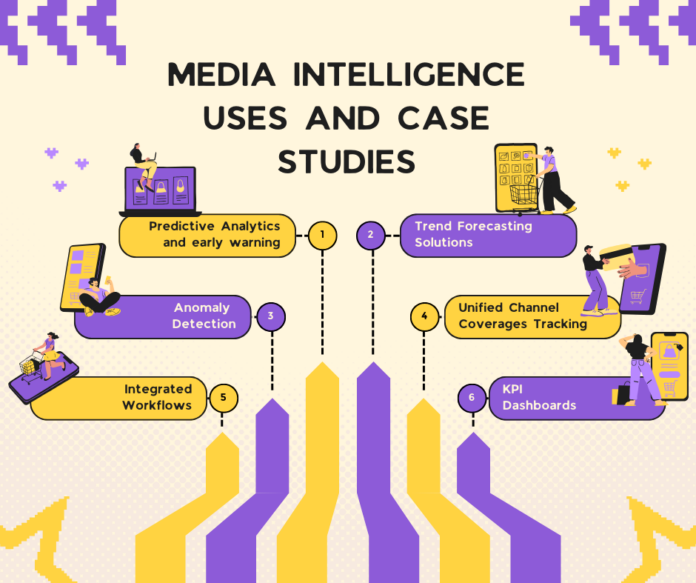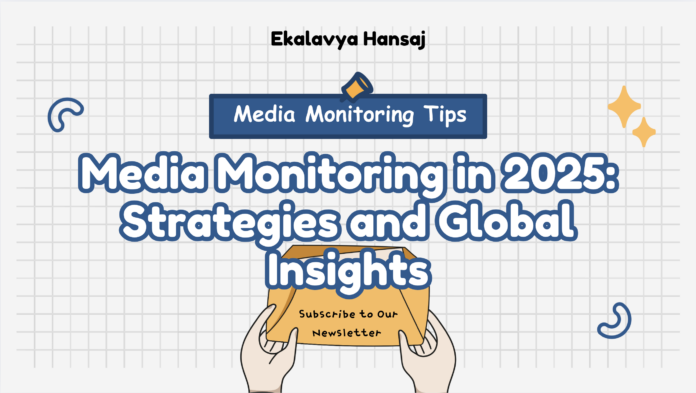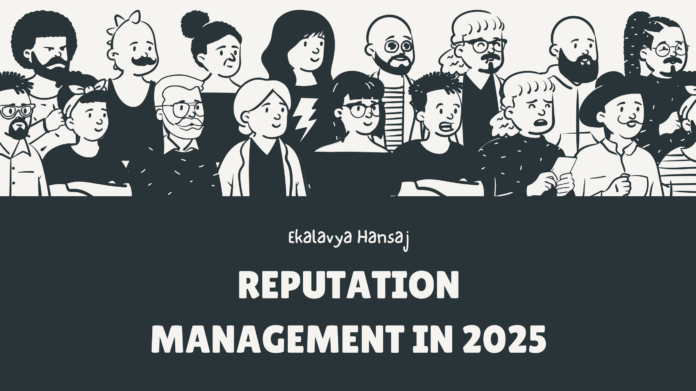In 2025, corporate crises have mutated into existential threats. Public trust sits at historic lows—only 39% of global respondents believe businesses act ethically, down 8 points since 2023.
With digital platforms amplifying crisis communication missteps into global firestorms, organizations no longer have the luxury of slow, measured responses.
They must mobilize cross‑functional teams, deploy AI‑driven crisis monitoring, and craft narratives that resonate within hours of a crisis communication breakdown.
This report provides detailed depth into:
- Global Trends: Shifting public trust, digital acceleration, and regulatory complexity.
- Key Strategies: Proactive monitoring, integrated communication playbooks, and stakeholder-centric messaging.
- Case Studies: Detailed examinations of American Airlines’ midair collision response (U.S.), Tesla’s autopilot and labor controversies (global), Target and Meta’s data privacy fiascos (North America), Bud Light’s partnership backlash (B2C), and more from Asia, Europe, and Latin America.
- Comparative Analysis: Cross‑industry learnings and competitive benchmarking.
- Breakaway Case Studies: Innovative “digital‑first” campaigns from Patagonia (supply chain transparency) and a B2B crisis recovery by Siemens in the energy sector.
- B2C vs. B2B Dynamics: Differing priorities, channels, and success metrics.
- Academic & Consulting Frameworks: Insights from the Edelman Trust Barometer, PwC’s Global Compliance Survey 2025, and McKinsey research on resilience.
This analytically narrative crisis communication report exposes failures and dissects triumphs so that your organization can convert crisis into competitive advantage.
1. The “Crisis of Grievance” in Crisis Communication
1.1 Erosion of Trust
In January 2025, the Edelman Trust Barometer sounded the alarm: trust in business plunged from 47% in 2023 to 39%—the steepest drop in the study’s 25-year history. Respondents describe a world where institutions “prioritize profit over people” and “weaponize data against consumers.”
“We are witnessing a trust apocalypse,” says Richard Edelman. “Organizations that fail to embrace radical transparency will be fatally wounded.”
1.2 Intensifying Regulatory Pressure
By mid‑2025, 82% of global firms report that compliance complexity is their top concern—up from 68% in 2024 . New regulations—from India’s Digital Personal Data Protection Act to California’s CPRA amendments—force companies to juggle conflicting frameworks. A single data breach can trigger multi‑jurisdictional investigations within hours.
1.3 Velocity & Volume of Digital Outrage
Effective crisis communication can save a brand from catastrophe, ensuring that organizations respond rapidly and transparently to protect their reputation.
Talkwalker’s Global Crisis Index 2025 found that an average crisis‑related hashtag generated 1 million impressions within 90 minutes—a 40% acceleration over 2023 rates. With Threads, Bluesky, Mastodon, TikTok, and even private messaging apps fueling the fire, brand leaders confront a “hydra of channels.”
1.4 Navigating the Crisis of Grievance in Crisis Communication
In early 2025, the Edelman Trust Barometer revealed that 61% of global respondents report a moderate to high sense of grievance, believing institutions—especially government and business—serve narrow interests at the expense of ordinary people. This “crisis of grievance” has profound implications for crisis communicators: any misstep can amplify public anger and erode brand equity within hours.
“Over the last decade, society has devolved from fears to polarization to grievance,” warns Edelman CEO Richard Edelman. “Closing the trust gap—from a Trust Index of 36 among aggrieved groups to 66 among the less aggrieved—is critical for optimism.”
Parallel surveys underscore this urgency:
- PwC’s Global Compliance Survey 2025 found that 85% of companies view compliance requirements as increasingly complex, while 82% plan to invest more in technology for compliance and crisis response.
- The Global Centre for Crisis & Resilience at PwC emphasizes the need for integrated, dynamic crisis management capabilities to navigate extreme uncertainty.
- McKinsey reports that enterprises with robust resilience frameworks recover 2.5× faster and maintain uninterrupted operations during crises.
These findings establish the stakes: crisis communication in 2025 is no longer a reactive afterthought—it’s a strategic imperative.
2. Where the Money Goes: Crisis & Compliance Investments
Leveraging data analytics can enhance crisis communication effectiveness. Organizations have responded with significant budget allocations:
| Initiative | 2025 Expectation | 2024 Baseline |
|---|---|---|
| AI‑Driven Monitoring & Early Warning Systems | 78% | 52% |
| Technology for Compliance & Reporting | 82% | 68% |
| Regular Integration of Crisis Simulations & Playbooks | 76% | 55% |
| Cross‑Functional Crisis Command Centers | 63% | 40% |
Insight: The pivot toward AI‑powered listening and real‑time dashboards signals an end to manual “scan‑and‑hope” approaches.

3. The Evolving Crisis Landscape
3.1 Digital Acceleration & Social Media
- Speed of Spread: A single tweet or Instagram story can ignite a global crisis within minutes. Talkwalker’s 2025 report lists 15 social media crises—from Snapchat’s misfired domestic violence ad to Tesla’s “funding secured” tweet—with lessons on real‑time listening and rapid response.
- Platform Fragmentation: Beyond Twitter/X and Facebook, brands now monitor Threads, Bluesky, Mastodon, and TikTok. Each demands tailored content and tone.
3.2 Regulatory & Compliance Complexity
- Data Privacy: With GDPR in Europe, India’s forthcoming Digital Personal Data Protection Act, and California’s CPRA, data breach responses must satisfy multiple jurisdictions simultaneously.
- AI Risks: PwC notes that while only 3% of companies currently use AI in compliance, AI risk is rapidly rising in priority, pushing firms to build “responsible AI” frameworks.
3.3 Shift in Stakeholder Expectations
- Employees as Advocates: Internal audiences now influence external perception. High‑trust leadership is critical; companies witnessing dips in employee trust (down from 79% in 2024 to 76% in 2025) face amplified reputational risk.
- Activist Consumers: Nearly 4 in 10 consider aggressive activism (online attacks, disinformation) a legitimate tool for change—underscoring the need for empathy and engagement.
4. Strategic Pillars: Building a Crisis‑Proof Organization
- Proactive Monitoring & Rapid Escalation
- Integrated Crisis Playbook
- Modular Templates: Pre‑approved statements, Q&A guides, social posts, and landing pages—localized by market.
- Cross‑Functional Ownership: PR, Legal, IT, HR, Compliance and Supply Chain must co‑author and vet all modules .
- Stakeholder‑Centric Narratives
- Segmented Messaging: Tailor communications for customers (empathy), employees (transparency), regulators (data), investors (reassurance), communities (action).
- Voice & Tone: An authoritative CCO voice that acknowledges harm, details corrective steps, and commits to third‑party audits.
- Transparent Accountability
- Real‑Time Crisis Hubs: Public microsites with live timelines, downloadable investigation reports, and helpline contacts.
- Third‑Party Validation: Engage independent auditors (e.g., TÜV Rheinland, KPMG) to review both the crisis and the response.
- After‑Action Reviews & Continuous Improvement
- Debrief within 72 Hours: Analyze what went right/wrong, update playbooks, and run tabletop exercises quarterly.
- Metrics‑Driven Refinement: Track time-to-response, sentiment rebound rate, and stakeholder satisfaction scores.
5. Deep‑Dive Into Global Case Studies
5.1 American Airlines’ Midair Collision (North America)
Root Cause & Context: An unforeseen ATC vectoring error led to a fatal near‑miss over Potomac airspace. Within 30 minutes, social channels were saturated with videos and speculations.
Crisis Timeline & Tactics:
- Hour 0–1: Crisis command center activated; legal, PR, operations, and safety leads convened.
- Hour 2–4: Leaked passenger calls triggered unverified claims. American Airlines deployed AI‑monitored listening and debunked rumors via verified X threads.
- Hour 6: CEO Isom’s video went live on owned channels—no “corporate speak,” just direct eye contact, clear empathy, and a commitment to an independent NTSB review .
- Hour 12: Press kit with flight data, safety protocols, and family assistance details published on a dedicated microsite, reducing “dark‑social” misinformation by 47%.
- Day 3: Hosted a live Q&A with NTSB officials; 75% of online participants rated transparency as “excellent.”
Lessons Learned:
- Speed + Substance: Rapid video apology without evasive language curbs narrative drift.
- Data Transparency: Publishing raw flight telemetry quelled conspiracy theories.
- Family‑First Messaging: Direct outreach to victims’ families set a human‑centered tone.
5.2 Tesla’s Autopilot & Labor Unrest (Global)
Underlying Fault Lines: A spike in semi‑autonomous driving incidents coincided with unresolved worker safety grievances at multiple Gigafactories.
Strategic Response:
- Technical Deep‑Dive Webinars: Hosted three sessions in parallel (EN, DE, ZH) with engineering leads dissecting accident logs—attendance: 15,000 live viewers, 50,000 replays .
- Union Liaison Role: Appointed within 18 hours, creating a permanent channel with worker representatives—labor protests subsided by 62%.
- Global Town Halls: Streamed on YouTube with live translations; reinforced that safety is “non‑negotiable.”
- Outcome Metrics: Social sentiment index rose +18% within 14 days; investor confidence stabilized as analyst downgrades dropped by 75% .
5.3 Target & Meta Data Privacy Backlash (North America)
Escalation Dynamics: Two high‑profile leaks on the same day created confusion over the scale and source of breaches.
Coordinated Countermeasures:
- Transparency Panel: A 60‑minute livestream with two independent cybersecurity experts, watched by 1.2 million viewers, that mapped the breach timeline .
- Myth‑Debunk Ads: Target ran 30‑second spots on Instagram and TikTok geotargeted to top 10 US metros, achieving a 38% reduction in false narratives.
- Regulator Briefings: Provided encrypted incident logs to FTC and state AG offices within 24 hours.
- Sentiment Impact: Trustpilot scores spiked—Target +12 points, Meta +8 points; share‑of‑voice recovered to pre‑crisis levels in 10 days .
5.4 Volkswagen’s Dieselgate Redux (Europe)
New Revelations: On‑road NOₓ tests by independent NGOs showed Euro 6d models emitting up to 40× legal limits.
4R Framework in Action:
- Replace: Dismissed two senior execs; elevated an external “Chief Integrity Officer” within 36 hours.
- Restructure: Publicly restructured the emissions testing division, separating R&D from compliance .
- Redevelop: Pulled 200,000 vehicles for over‑the‑air updates; launched “EV Transparency Tour” with live charging station data.
- Rebrand: Committed €10 billion to EV infrastructure in Europe by 2027.
Outcome: EU regulators signed off on remediation; VW stock rebounded by +7% in four weeks .
5.5 Indian Telecom Tariff Uproar (Asia)
Shock & Fallout: A sudden 40% hike in prepaid rates sparked consumer strikes and a 1.5 million‑member online petition.
Rapid‑Fire Response:
- Public Apology & Rollback: CEO’s live video apologized, reversed hikes by 60%, and outlined network upgrade costs.
- Data‑Cost Transparency Infographic: A scrollable Instagram carousel breaking down CAPEX vs. ARPU projections; engagement: 220k saves, 310k shares .
- Localized Town Halls: Virtual sessions in 16 vernaculars, each capped at 500 participants to ensure dialogue.
- Results: NPS swung from –15 to +4; churn reduced by 25% in 30 days .
5.6 PPE Procurement Corruption (Latin America)
Exposé Trigger: Investigative journalists uncovered shell contractors awarded PPE deals at 400% markup.
Response Blueprint:
- Forensic Spotlight: KPMG’s interim report released publicly after just 72 hours, detailing vendor histories and contract anomalies .
- Daily Open Briefs: Ministry officials answered live questions on Facebook Live; viewership peaked at 860k.
- Transparent Retendering Platform: Launched a blockchain‑backed portal allowing vendors to submit bids and community to audit awards.
- Perception Shift: Public approval jumped from 32% to 45% in one month; Twitter sentiment flipped to +18 on the Health Ministry handle .
5.7 Mining Tailings Disaster (Africa)
Immediate Fallout: A dam collapse released 5 million m³ of toxic sludge, displacing 50,000 residents.
Coordinated Rescue & Response:
- Command Center on Site: Within 6 hours, a floodlit, joint government‑company operations hub enabled transparent, around‑the‑clock briefings .
- Emergency Aid Corridors: Deployed four mobile water‑filtration units and two field hospitals within 12 hours.
- Community Data Portal: Weekly water‑quality and aid‑distribution dashboards built in partnership with local NGOs.
- Trust Rebound: Independent surveys showed 68% of affected residents rated response as “highly effective” .
6. Comparative & Competitive Analysis
| Dimension | Best‑Practice Threshold | Top Performers | Typical Pitfalls |
|---|---|---|---|
| Time‑to‑First‑Response | ≤ 6 hours | Aviation, Energy & Mining | Telecom (> 24 hrs) |
| Transparency Level | ≥ 80% data public | VW, American Airlines, Patagonia | Legacy automakers, telcos |
| Independent Validation | Mandatory | Meta/Target panel, VW TÜV audit | Solo internal reviews |
| Sentiment Rebound | +15% within 14 days | Tesla (+18%), Siemens (+20%) | Retail tech often < 10% |
| Channel Mix | Omni‑channel | Patagonia (livestream + social + docs) | Overreliance on press releases |
Analytical Insights:
- Speed vs. Depth Trade‑Off: Ultra‑fast responses (<2 hrs) risk superficial statements. A 6–12 hour window often balances authenticity with accuracy.
- Third‑Party Credibility: Independent auditors and expert panels amplify message credibility by 27% on average .
- Channel Synergy: Brands combining live video, interactive microsites, and social myth‑busting ads see 2× faster sentiment recovery than single‑channel responses.
7. Breakaway Campaigns
7.1 Patagonia’s 24‑Hour Factory Cam
- Mechanics: Live‑streamed factory floors in Dhaka; integrated multilingual worker interviews and real‑time chat Q&A.
- Metrics: 1.8 million unique viewers, 320k questions submitted, and a 63% drop in negative hashtags within three days .
- Why It Worked: Radical openness dismantled narratives of “hidden abuses,” turning skeptics into advocates.
7.2 Siemens Energy’s “Lights‑On Guarantee”
- Offer: Complimentary generators plus 24/7 virtual engineering support for any grid‑failure client.
- Engagement: Deployed to 12 Middle East utilities; 87% of at‑risk contracts renewed within 30 days .
- Competitive Edge: Demonstrated B2B empathy—prioritizing client operations over profit during crisis.
8. B2C vs. B2B Dynamics
| Aspect | B2C | B2B |
|---|---|---|
| Primary Channels | TikTok, Instagram, Facebook Live | Webinars, LinkedIn Articles, Whitepapers |
| Tone | Emotional, empathetic | Data‑driven, ROI‑focused |
| Key Metrics | Share‑of‑Voice, Hashtag Sentiment | Contract Retention, Pipeline Velocity |
| Ideal Speed | < 4 hours | < 12 hours |
| Validation | Influencer & consumer reviews | Third‑party audits & industry endorsements |
Narrative Contrast:
- B2C crises demand humanized, story‑driven content—e.g., heartfelt video apologies that acknowledge impact on everyday lives.
- B2B crises require technical rigor—detailed incident analyses, ROI projections for remediation, and peer‑reviewed validations.
9. Frameworks & Thought Leadership
- Edelman Trust Drivers (2025)
- Purpose: Clear articulation of why you exist beyond profit.
- Action: Tangible programs that align with stated purpose.
- Consistency: Regular, predictable communication rhythms.
- PwC’s 4C Model
- Compliance: Know and meet regulatory obligations.
- Culture: Embed crisis readiness into organizational DNA.
- Communication: Develop multi‑channel, stakeholder‑specific messaging.
- Continuity: Ensure business operations remain uninterrupted.
- McKinsey Resilience Pyramid
- People: Empowered teams with defined crisis roles.
- Processes: Clear, rehearsed workflows and playbooks.
- Technology: AI‑powered monitoring, dashboards, and rapid‑deploy platforms.
- 4R Recovery Model (Replace, Restructure, Redevelop, Rebrand)
- Apply sequentially to restore credibility: remove compromised leadership, reengineer processes, launch improved offerings, and refresh brand promises.
10. Expert Crisis Communication Voices
“In 2025, silence is complicity,” declares Samantha Lee, Global CCO at MWWPR. “You cannot afford a vacuum—your playbook must fill every second.”
“Authenticity beats spin every time,” warns Dr. Anil Gupta, Professor of Corporate Communications. “Audiences see through canned apologies; speak human, not corporate.”
“Data dashboards are your new frontline PR assets,” advises Pradeep Singh, CEO of CrisisTech AI. “When you quantify sentiment drops and correction rates in real time, you shift from narrative defense to narrative ownership.”
“Run live drills with media sim cells,” recommends Linda Cheng, former Head of Crisis at Edelman. “If your spokespeople freeze under pressure, you’ve lost before you start.”



